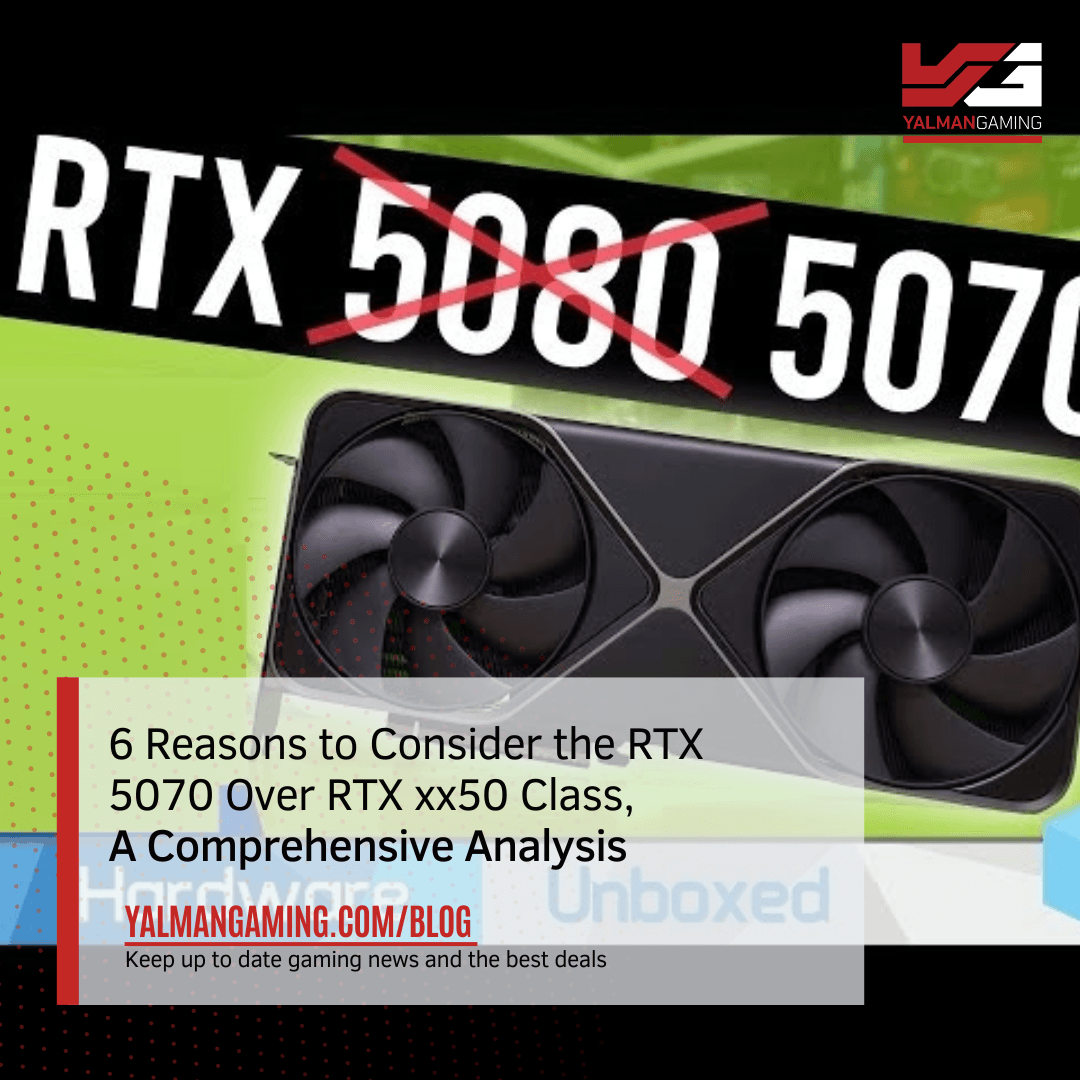6 Reasons to Consider the RTX 5070 Over RTX xx50 Class

6 Reasons to Consider the RTX 5070 Over RTX xx50 Class
NVIDIA GeForce RTX 5070: A Comprehensive Analysis
NVIDIA GeForce RTX 5070: A Comprehensive Analysis of Specifications, Performance, and Market Position
The NVIDIA GeForce RTX 5070, part of the RTX 50 series, represents a significant advancement in graphics processing technology. This article delves into its architecture, performance, and how it compares to both its predecessors and competitors.
Introduction
The NVIDIA GeForce RTX 5070, introduced in March 2025, represents NVIDIA’s latest effort to deliver high-performance graphics at a more accessible price point. Positioned within the RTX 50-series lineup, the RTX 5070 aims to provide gamers and professionals with advanced features and capabilities. This article offers an in-depth examination of the RTX 5070, focusing on its specifications, performance metrics, architectural design, and its standing within the broader GPU market.
Architectural Overview: Blackwell Architecture and CUDA Core Distribution
The RTX 5070 is built upon NVIDIA’s Blackwell architecture, a successor to the Ampere architecture, which introduces several enhancements in performance and efficiency. A critical aspect of any GPU’s performance is its CUDA core count, which directly influences parallel processing capabilities. The RTX 5070 features 6,144 CUDA cores, accounting for approximately 25% of the 24,576 CUDA cores found in the flagship RTX 5090.

6 Reasons to Consider the RTX 5070 Over RTX xx50 Class
This distribution marks a departure from previous xx70-class GPUs. For instance, the RTX 4070 housed 5,888 CUDA cores, representing about 31.9% of the RTX 4090’s cores, while the RTX 3070 included over 50% of the RTX 3090’s cores.
This trend indicates a significant reduction in CUDA core allocation for the xx70 series relative to their flagship counterparts, aligning the RTX 5070 more closely with the xx50-class GPUs in terms of core distribution.
Performance Metrics: Benchmark Analysis and Gaming Experience
Performance evaluations of the RTX 5070 reveal a mixed picture. While NVIDIA’s marketing suggested that the RTX 5070 could deliver performance levels comparable to the RTX 4090, real-world benchmarks indicate otherwise. The RTX 5070 outperforms the RTX 4070 by approximately 20% and is only marginally faster than the RTX 4070 Super, with a performance increase of about 4%.
In gaming scenarios, the RTX 5070 excels at 1440p resolutions, providing high frame rates and a smooth experience. However, at 4K resolutions, the card struggles to maintain consistent performance without the assistance of NVIDIA’s Deep Learning Super Sampling (DLSS) 4 technology. The 12GB of GDDR7 VRAM, while adequate for current 1440p gaming, may become a limiting factor for future 4K gaming titles that demand higher memory bandwidth and capacity.
DLSS 4 and AI Integration: Enhancing Visual Fidelity and Performance
A notable feature of the RTX 5070 is the integration of DLSS 4, NVIDIA’s latest iteration of AI-driven upscaling technology. DLSS 4 introduces Multi Frame Generation, an AI technique that synthesizes additional frames to boost frame rates and enhance visual smoothness. This technology is particularly beneficial in scenarios where the GPU’s raw rendering power is insufficient to achieve desired performance levels, effectively bridging the gap between native rendering capabilities and performance expectations.
While DLSS 4 offers significant improvements in performance and image quality, it is essential to note that reliance on such technologies may vary depending on individual preferences and the specific requirements of applications or games. The effectiveness of DLSS 4 also depends on developer implementation and the nature of the content being rendered.
Market Position and Pricing Strategy: Balancing Performance and Affordability
Priced at $549, the RTX 5070 is positioned as an affordable entry point into NVIDIA’s 50-series lineup. However, its performance metrics suggest that it may not offer a substantial upgrade over its predecessors, particularly for users already owning an RTX 4070 or RTX 4070 Super. The limited performance gains, coupled with the reduced CUDA core count, raise questions about the value proposition of the RTX 5070 within the current GPU market landscape.
Furthermore, the impending release of AMD’s Radeon RX 9070 and RX 9070 XT, which are expected to feature 16GB of VRAM and competitive performance metrics, presents additional considerations for potential buyers. These alternatives may offer better value for users seeking higher memory capacity and comparable performance at similar or slightly higher price points.
Reff: theverge.com
Comparative Analysis: RTX 5070 vs. RTX 4070
To provide a clearer understanding of the RTX 5070’s position within NVIDIA’s product stack, a comparative analysis with the RTX 4070 is presented below:
| Specification | RTX 5070 | RTX 4070 |
|---|---|---|
| CUDA Cores | 6,144 | 5,888 |
| Boost Clock (MHz) | 2,512 | 2,475 |
| VRAM (GB) | 12 | 12 |
| Memory Speed (Gbps) | 28 | 21 |
| Memory Bandwidth (GB/s) | 672 | 504 |
| TDP (Watts) | 250 | 200 |
| Launch Price (USD) | $549 | $599 |
Table 1: Comparison of key specifications between RTX 5070 and RTX 4070.
This comparison highlights that while the RTX 5070 offers improvements in memory speed and bandwidth, the gains in CUDA core count and clock speeds are relatively modest. The increased TDP also suggests higher power consumption, which may be a consideration for users with energy efficiency preferences or thermal management constraints.
Read More: NVIDIA RTX 5090: The Ultimate GPU for Next-Gen Gaming and AI
